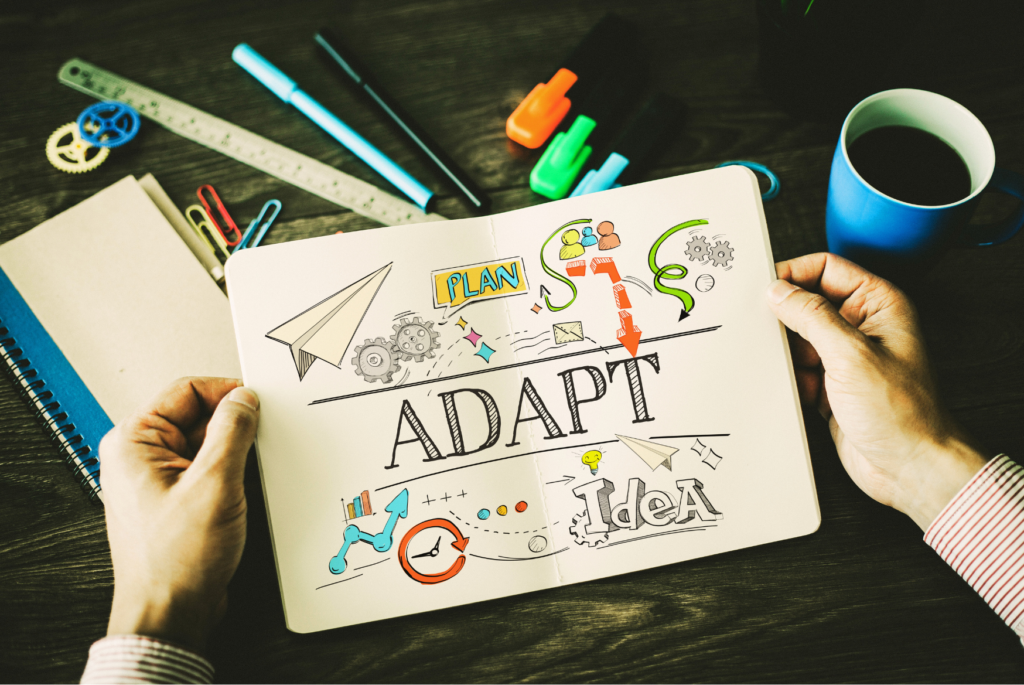Adapting to Change: Your Guide to Thriving in the New Year
Here we are, already a few weeks into the new year, and I’ve been pondering a thought I’d love to share with you. The new year buzz may have settled, but the energy of transformation is still present. It’s a time when our resolutions get their real test, and our intentions face the hustle of daily life. But guess what? This is the perfect moment to talk about not just setting paths but also walking them, especially when they take unexpected turns.
Adapting to change or change itself isn’t exclusive to the first of January; it’s an ever-present force in our personal and professional lives. So, whether you’re still riding the wave of new beginnings or you’re steadying yourself for the long haul, let’s chat about how to make change your ally.
The Importance of Flexibility in a Changing World

In this rapidly evolving era, flexibility has become more than just a desirable trait—it’s an essential component of both personal growth and professional success. But what exactly do we mean by flexibility? It’s not just about being able to touch your toes (though that’s great too). Flexibility is the capacity to adapt to new, different, or changing situations. It’s about being open to new ideas, willing to learn, and ready to pivot when the situation calls for it, which is crucial for adapting to change.
Flexibility in Personal and Professional Growth

Think about flexibility as the mental, emotional, and practical agility that allows you to handle life’s surprises with grace. On a personal level, it means being able to adjust your approach to challenges, cope with unexpected changes in your life, and continue moving forward. Professionally, it translates to staying relevant in your career, embracing new technologies, and meeting the ever-changing demands of the job market, all part of adapting to change.
The Benefits of Being Flexible

Being flexible doesn’t mean you don’t have plans or goals. It means you’re prepared to adapt to reach them. The benefits are numerous:
– Increased Resilience: Flexibility contributes to resilience, allowing you to bounce back from setbacks and disappointments.
– Enhanced Problem-Solving Skills: When you’re flexible, you can approach problems from different angles and the bigger the problem the more creative solutions.
– Better Opportunities: I’ve lost count of the number of times being open to a new way of doing things has led me to opportunities I never would have imagined.
The great news is that flexibility isn’t something you’re born with; it’s something you can develop. And the start of a new year is the perfect time to start stretching those muscles.
Building Resilience for Long-Term Success

If flexibility is about bending without breaking, resilience is the ability to bounce back into shape after being bent. In the face of change—be it personal upheaval, professional challenges, or the simple everyday shifts that life throws our way—resilience is the quality that not only helps us survive but thrive.
Understanding Resilience
Resilience is often mistaken for mere toughness, but it’s much more than that. It’s the complex interplay of emotional intelligence, mental fortitude, and, often, a bit of grit. It’s what allows us to face a crisis or failure and emerge stronger on the other side. In a changing world, resilience is the anchor that keeps us steady in stormy seas.
Tips for Cultivating Resilience

Building resilience isn’t a one-off task; it’s a continuous process. Here are some tips to help you build and maintain this crucial quality:
– Maintain a Positive Mindset: Start by acknowledging that setbacks are temporary and that you have the power to overcome them. Positivity isn’t about ignoring the negative but choosing to focus on the possible solutions.
– Set Realistic Goals: Resilience grows when we set achievable goals and work towards them. This creates a sense of accomplishment and the confidence to handle bigger challenges.
– Embrace Failure as a Teacher: Instead of fearing failure, resilient people learn from it. Each misstep is a chance to learn and grow.
– Practice Self-Care: Regularly invest time in activities that replenish your energy. This could be exercise, meditation, hobbies, or spending time with loved ones.
Resilience is the quiet confidence that comes from knowing you’ve faced challenges before, and you can do it again. It’s the decision to get up one more time than you’ve been knocked down. And in the ever-changing landscape of our lives, I’d say resilience is one of the most valuable skills we can develop.
Embracing the Excitement of New Beginnings

New beginnings offer a psychological reset button—a chance to leave behind what no longer serves us and embrace fresh perspectives. They stimulate the brain’s reward centers, giving us a burst of dopamine that accompanies new experiences. This can lead to increased motivation, a sense of excitement, and an increased capacity for learning.
Approaching New Opportunities with Positive Energy

Fresh opportunities are the very essence of growth and progress, both in our personal lives and on our professional paths. They fuel our journey, infusing it with energy and potential, and propel us toward greater heights of our achievement and fulfillment. Here’s how to approach them with the enthusiasm they deserve:
– Cultivate Curiosity: Approach new beginnings with a learner’s mindset. Be curious, ask questions, and be eager to explore.
– Open Your Mind: Let go of your old beliefs. A new beginning is your chance to rewrite the narrative of your life or career.
– Visualize Success: Picture yourself succeeding in your new venture. Visualization can be a powerful tool for motivation and confidence-building.
In embracing the excitement of new beginnings, we not only set the stage for success, but we also open ourselves up to the joy of the journey. As you navigate your own new starts this year, remember that it’s not just about the destination—it’s about the journey too.
Practical Strategies for Adapting to Change

Change is a constant. It can be exhilarating for some and overwhelming for others. The key to not just surviving but thriving in the face of change is to have a toolkit of strategies that can help you adapt swiftly and effectively. Here are some actionable steps to ensure you’re well-equipped for whatever changes come your way.
Actionable Steps for Adapting to Change
– Stay Informed: Keep your finger on the pulse of industry trends, emerging markets, and global events. Information is a valuable currency in the economy of change.
– Be Proactive: Anticipate change by actively seeking feedback, envisioning possible scenarios, and crafting contingency plans. Proactivity turns potential disruptions into manageable challenges.
– Embrace Continuous Learning: Commit to lifelong learning to keep your skills sharp and your mind open. This could mean formal education, online courses, or simply staying curious about the world around you.

As we move forward, let’s recalibrate our perspectives. Let’s not shy away from change but welcome it with open arms and a strategic mind. May we all approach the unfolding year with the confidence that we are equipped to not only meet the challenges ahead but to harness them for our growth, success, and happiness.







